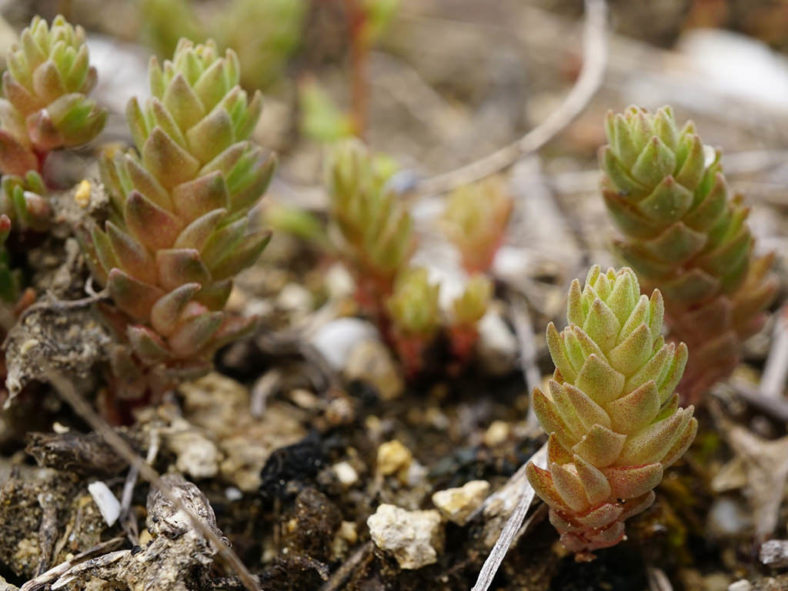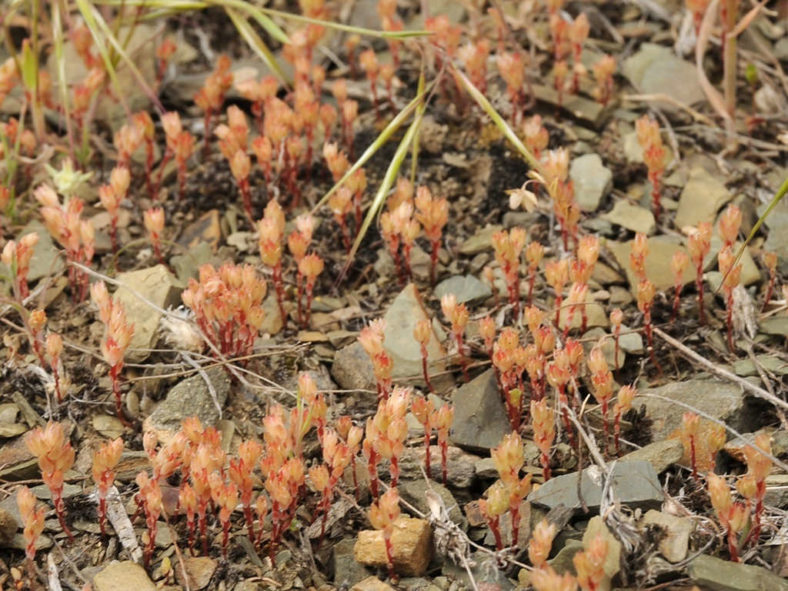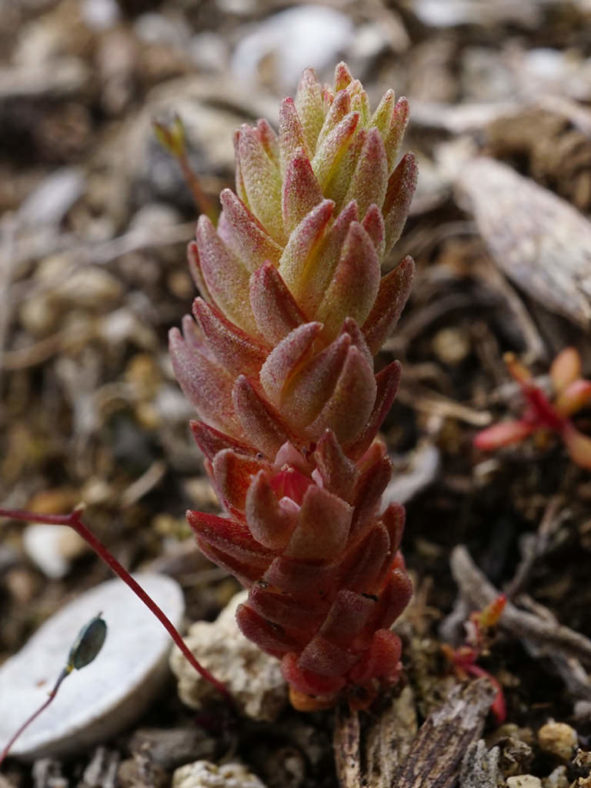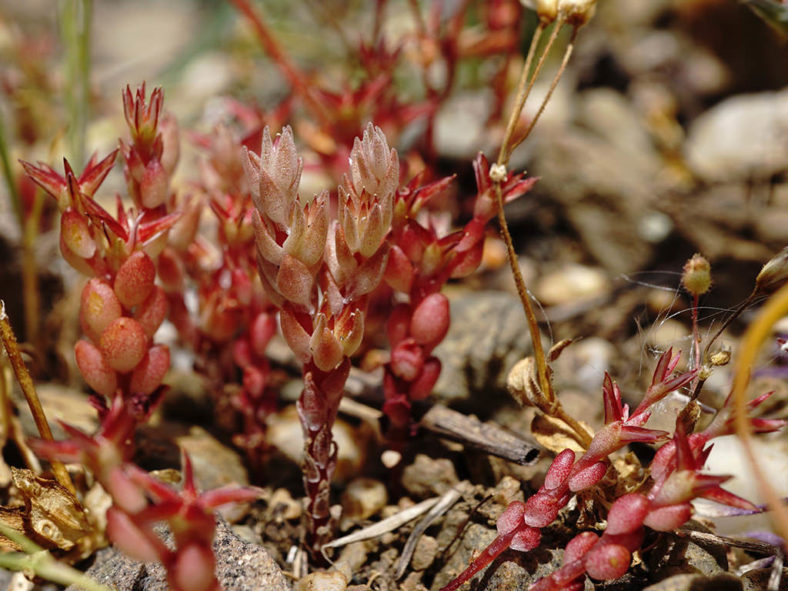Scientific Name
Sedum aetnense Tineo
Synonym(s)
Macrosepalum aetnense
Scientific Classification
Family: Crassulaceae
Subfamily: Sempervivoideae
Tribe: Sedeae
Genus: Sedum
Etymology
The specific epithet "aetnense (AN-yoo-um)" refers to Mount Etna, or simply Etna, one of the world's most active volcanoes on the east coast of Sicily in Italy, which is the type locality of this species.
Origin
Sedum aetnense is native to southern Europe, Turkey (Anatolia), Iran, and Near East. It grows on basaltic rocks, mainly at elevations between 2,300 and 4,600 feet (700 and 1,400 m).
Description
Sedum aetnense is a small, annual succulent with erect or ascending, usually simple stems covered with fleshy, erect-appressed leaves. It can grow up to 2.4 inches (6 cm) tall. The leaves are glaucous, dark green, or red-tinged. They are conical-oblong, often with ciliate or finely dentate margins, and can measure up to 0.2 inches (0.5 cm) long.
The flowers are 4- to 5-merous with white, sometimes red-tinged petals and yellowish or red anthers. They appear in summer in cymose inflorescences, usually consisting of one or in large specimens, often two or more cincinni.

How to Grow and Care for Sedum aetnense
Light: Although widespread in the wild, S. annuum is not cultivated much. It grows best in locations where it will enjoy the full sun for at least six hours daily.
Soil: S. aetnense does not like to sit in waterlogged soil, so drainage is essential to prevent root rot. Choose a well-draining soil mix.
Watering: From spring through fall, water thoroughly and wait for the soil to dry out before watering again. Avoid wetting the leaves, stems, and flowers when watering.
Propagation: Since it grows as an annual plant, S. aetnense can be propagated only from seeds.
Learn more at How to Grow and Care for Sedum.
Toxicity of Sedum annuum
S. aetnense is not listed as toxic for people but can be mildly toxic to pets and children.
Links
- Back to genus Sedum
- Succupedia: Browse succulents by Scientific Name, Common Name, Genus, Family, USDA Hardiness Zone, Origin, or cacti by Genus
Photo Gallery
Click on a photo to see a larger version.


